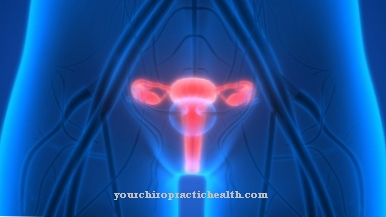Selective perception is based on the natural mechanism by which the human brain searches for patterns in its environment. Due to the selective character, people are more likely to perceive what can be inserted into a pattern. The selectivity of perception receives clinical relevance, for example in the context of depression.
What is selective perception?

The human brain works with patterns. From an evolutionary point of view, the human ability to recognize patterns has made a significant contribution to survival. Using pattern recognition mechanisms, the brain has made the environment more predictable and therefore less dangerous. The search for patterns is a fundamental mechanism of the human brain to this day and is reflected in processes such as perception.
The selective perception corresponds to a psychological phenomenon that only allows certain aspects of the environment to pass into consciousness. If all aspects of a situation were to become conscious, there would be chaos. The brain could not work effectively with the wealth of information and is therefore dependent on constantly blocking out stimuli. Percepts (what is perceived) are therefore not the same as reality, but merely a subjective partial impression of it.
Certain sensory stimuli are emphasized in the perception. The perception thus consists of priming, framing and many similar effects. The human brain looks for patterns in the environment, recognizes these patterns and emphasizes them. For this reason, what corresponds to a certain pattern is more likely to be perceived. Stimuli from the perceptual process are more likely to be emphasized by the brain if they can be embedded in a pattern. Selective perception thus corresponds to the unconscious and automatic search for patterns that the human brain constantly operates.
Function & task
In a discussion, for example, people are more likely to hear the arguments that support their own position. It has been shown that they tend to see things that are familiar to them from their own environment. The human perception works as protection against stimulus overload with different filters. These filters correspond to a large extent to one's own interests, values, opinions and one's own experiences with the world.
This principle of selective perception can be traced back to the brain's search for patterns. The selection of all perceived sensory impressions is characterized by experience and expectations due to this pattern search. For example, if you read an article about spelling, you will automatically pay more attention to the correctness of the spelling in this article. Anyone who walks through the city with a bad opinion of the people is more likely to remember the one incident that confirms this opinion and ignore the dozen incidents contrary to this opinion. Anyone who has just bought a Smart suddenly sees Smarts everywhere in traffic. Anyone who has just had a child hears the more children screaming in everyday life. Perception is always selective.
For this reason, no two different people perceive a situation in the same way. Their previous history determined what they emphasized in a situation.
The filtering of sensory stimuli is a prerequisite for survival for all living things. More stimuli constantly flow into an individual than the sensory cells could absorb and transmit to the central nervous system. Most stimulus filters are situational. For this reason, perception is always context-related. Stimulus filters such as interests are less situational, but still help to perceive what is relevant.
With the stimulus filtering, sensory impressions are classified. This classification begins in the sense organ and continues in the central nervous system as selective perception. The basis of selective perception is a specific need, such as hunger. Through selective perception, people with hunger are presented with bakeries and inns on a silver platter, since experience has shown that hunger can be satisfied there.
You can find your medication here
➔ Medicines for visual disturbances and eye complaintsIllnesses & ailments
Basically, the selective perception is not pathological, but is one of the natural reality filters and is therefore a normal reference to reality. The selective perception can, however, take on pathological forms and favor diseases. Mental illnesses in particular are often the result of selective perceptual disorders. For example, a traumatic incident in the past can lead to the person affected having an extremely negative image of his fellow human beings and only hearing negative things in their statements. Such perceptual disorders play a role, for example, in diseases such as depression or eating disorders. Depressed people perceive through black glasses.
Culturally and socially determined thinking habits are also a great filter and affect perception by leading to a selection from all perceptible stimuli. Primarily what is perceived is what fits into the thought pattern. If the individual adopts thought patterns unchecked, his ability to perceive is severely restricted and can also favor mental illnesses, for example if the thought patterns learned as correctly do not correspond to his own perceived truth.
Not only too tightly placed filters can affect the mental well-being. Filters that are too open also play a role in mental illness. In many psychoses, the perception filters no longer work. Those affected are thin-skinned and no longer able to separate the inner and outer world. The patients often perceive internal conflicts as manifestations in the outside world and they are defenseless against external things. Perceptual disorders or distortions play a role in almost every mental illness. For this reason, selective perception is of high clinical relevance in the field of psychology.












.jpg)



.jpg)










.jpg)
